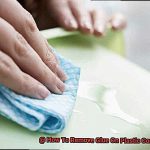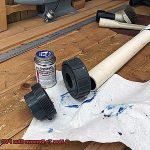Are you struggling to remove the glue residue from your lace wig?
Whether it’s for daily wear or a special occasion, getting rid of the glue can be a tedious and time-consuming process. But don’t worry, we’ve got you covered with some simple techniques and equipment that will help you safely remove the glue without damaging your hair.
In this post, we’ll provide you with tips on how to safely remove glue from lace wigs. From the basics to the step-by-step process, we’ve got everything covered.
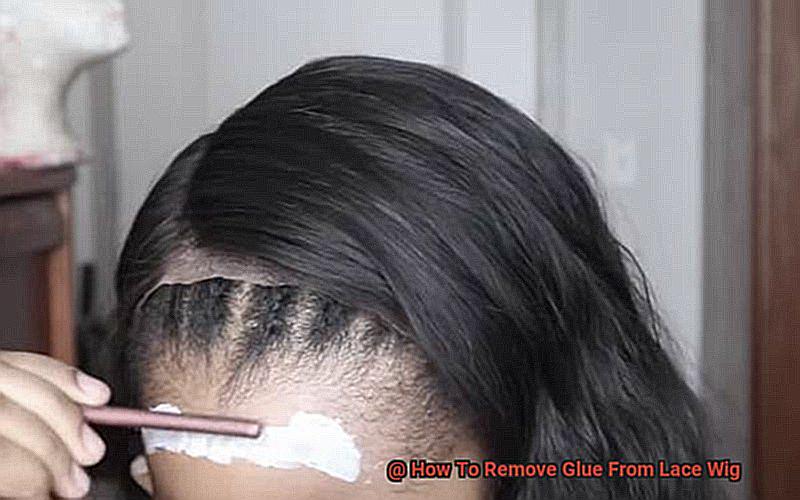
Let’s start by discussing the different types of wig glue and how to choose the right one for your wig. We’ll also guide you through preparing your wig for removal by gently lifting the lace and applying a solvent.
Next up is removing the glue residue using a specific adhesive remover or oil. But our job doesn’t end there.
By following our guide, you’ll have all the information needed to say goodbye to stubborn glue remnants and welcome a fresh new look.
Gather the Necessary Materials
Contents
Gathering the necessary materials is a crucial first step to safely and effectively remove glue from your lace wig.
With the right products and tools, you can make the process easy and stress-free. Here’s what you need to know:
Good Adhesive Remover
Not all adhesive removers are created equal, and it’s important to choose one that’s specifically designed for use on lace wigs.
This will prevent any damage to the delicate lace material. So, before starting the removal process, make sure to read labels carefully and choose the right product.
A Comb or Brush
Next up, you’ll need a comb or brush to gently loosen the glue from the wig without causing any damage to the lace or hair. Remember, lace wigs require extra care, so use a gentle touch when handling them.
You may also want to consider using a small pair of scissors or trimming shears to trim any excess lace that may be sticking out from under the wig cap. This will make the removal process easier and prevent any accidental snipping of the hair.
A Clean Towel or Cloth
Lastly, you’ll need a clean towel or cloth to wipe away any excess adhesive remover or residue. A lint-free cloth is best, as it won’t leave any fibers behind on the wig.

Now that you have all of your supplies ready, it’s time to get to work. Before applying any solvent, gently brush or comb your hair to eliminate tangles and knots and make it easier to reach areas where glue has been applied.
Using cotton balls or a soft cloth, apply the solvent to the glued area. Be careful not to use too much as it can damage hair or cause scalp irritation.
Allow the glue to sit for a few minutes before gently lifting the edges of the lace wig with your fingers or a comb and slowly peeling away the glue residue. If there are still stubborn spots, use more solvent and repeat the procedure until all glue is removed.
Avoid using hot water as it can damage the hair strands and cause tangling.
Prepare the Wig for Glue Removal
Lace wigs are a wonderful way to switch up your appearance without affecting your natural hair.
However, removing the glue can be challenging. Luckily, you can safely and easily remove the glue residue from your delicate lace wig without causing any damage.
To prepare the wig for glue removal, you will need a few essential tools such as rubbing alcohol, a spray bottle, cotton balls or pads, and a fine-tooth comb or wig brush. These items will help make the process smooth and effective.
The first step is to saturate the lace wig with rubbing alcohol. Pour the rubbing alcohol into a spray bottle and spray it onto areas where the glue is located. It is crucial to ensure that the entire lace wig is covered with rubbing alcohol.
Next, gently work the rubbing alcohol into the lace wig using your fingers or a comb. This will break down the glue and make it easier to remove. Avoid pulling or tugging on the hair as this can cause damage to the wig.
After working in the rubbing alcohol, use a cotton ball or pad to dab it onto areas with remaining glue. This will help loosen any remaining glue and make it more accessible.
To remove any remaining residue, use a fine-tooth comb or wig brush to gently brush out any remaining debris. Start at the ends of the hair and work your way up to avoid causing damage to the wig.
Repeat this process until all of the glue has been removed from the lace wig. It may take several applications of rubbing alcohol and dabbing with cotton balls or pads before all of the glue is removed.
Apply Solvent to Glued Areas
Solvents are powerful chemicals that can dissolve adhesives, making them an effective solution for breaking down the glue used in lace wigs. Alcohol, acetone, and citrus-based solvents are all suitable options, but it’s important to choose the right solvent and apply it carefully to prevent any damage to your wig.
To begin, test a small area of the wig before applying any solvent to ensure that it won’t cause any harm or discoloration.
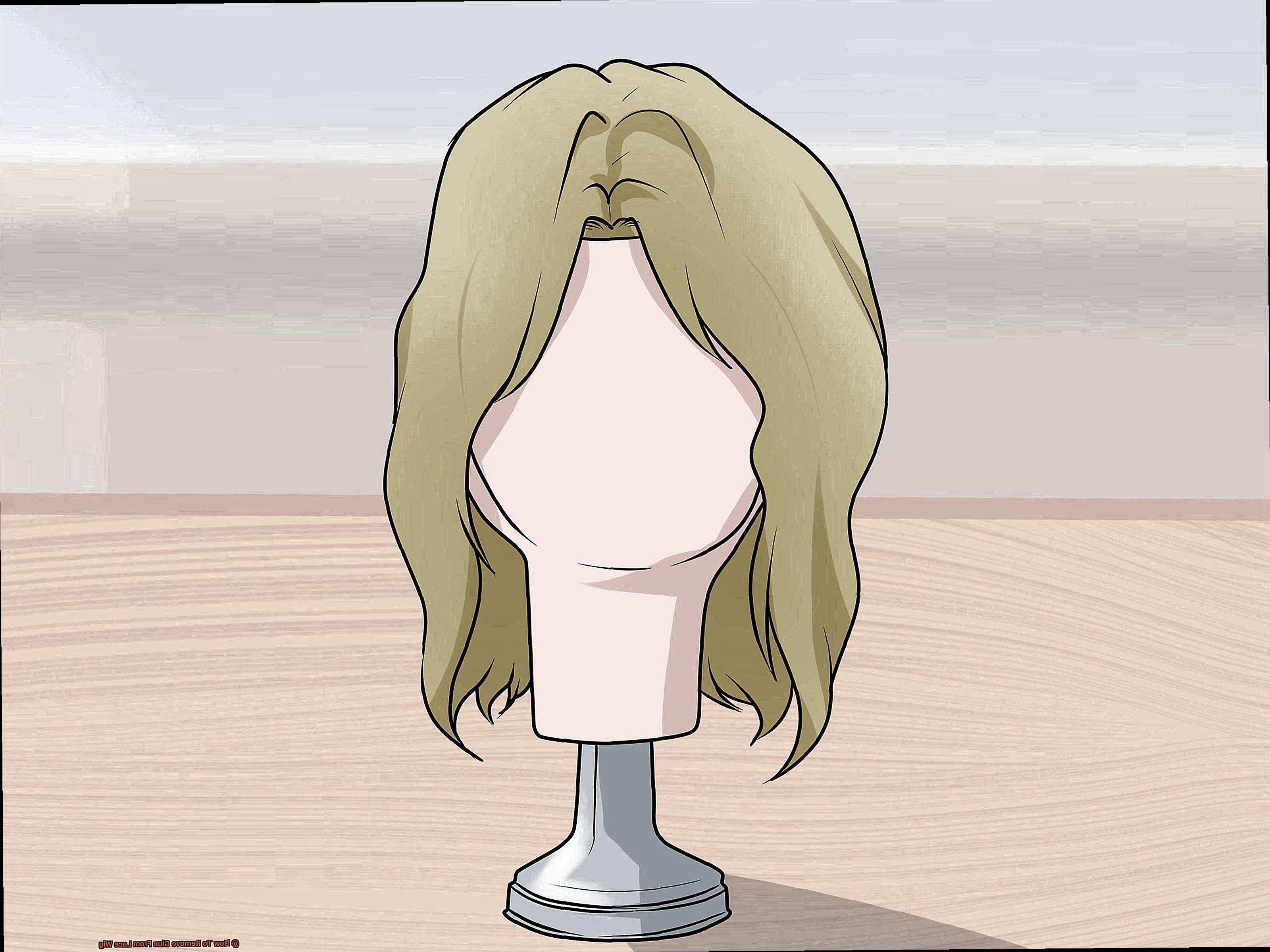
Once you’ve selected your solvent and tested a small area, apply it directly onto the glued areas of the wig using a cotton ball or swab.
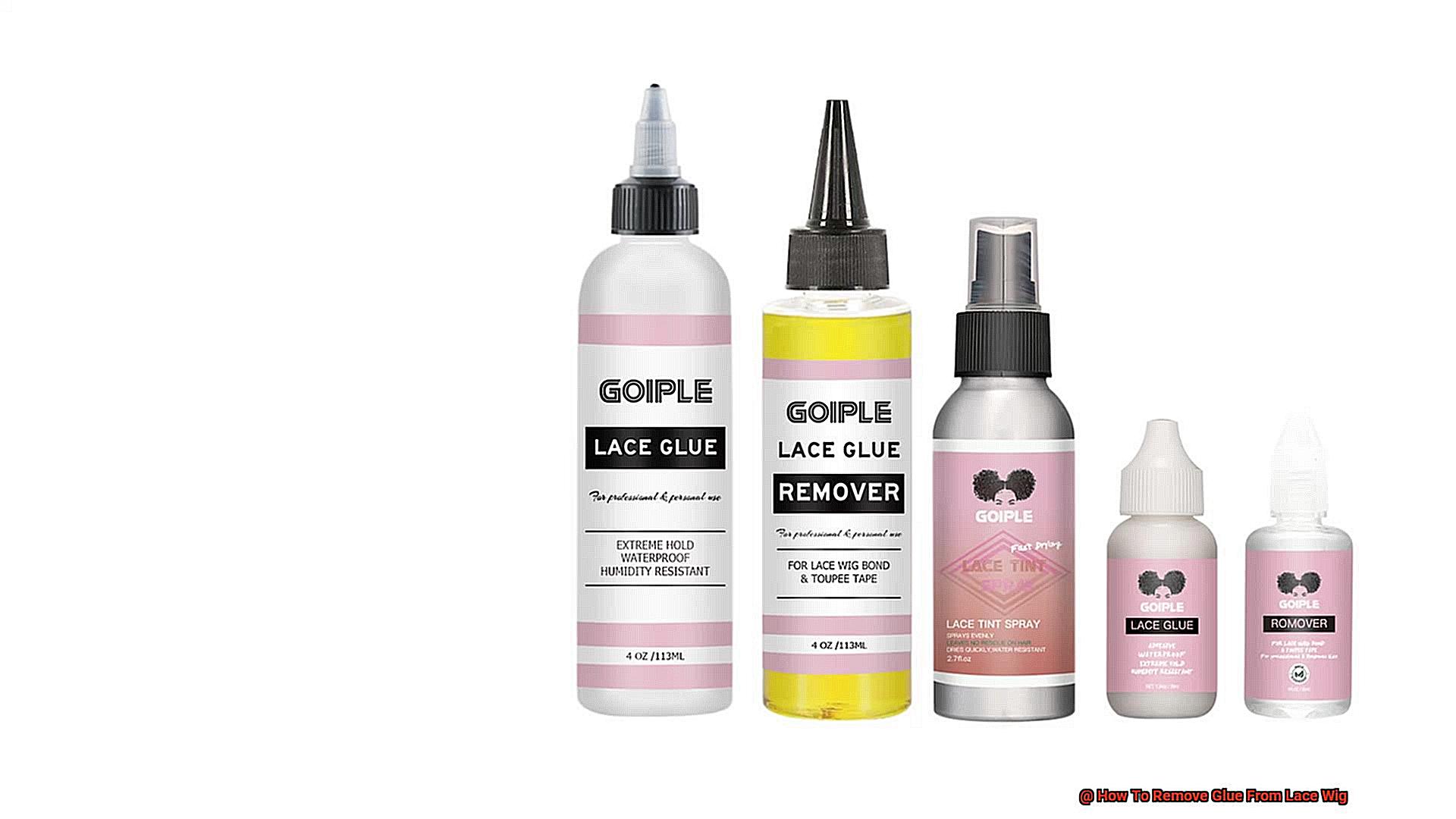
Be sure to saturate the area thoroughly and allow the solvent to sit for a few minutes to penetrate the adhesive. If the glue is particularly resilient, repeat this process several times until it begins to break down.
Once the solvent has had time to work its magic, gently scrape away the glue using a plastic scraper or your fingernail. Be careful not to pull too hard on the wig, as this could cause damage.
Instead, work slowly and methodically until all of the glue has been removed. After successfully removing all of the glue, wash and condition your wig thoroughly to remove any remaining residue from the solvent.
With a little patience and careful application of solvent, you can restore your lace wig to its former glory. In conclusion, applying solvent to glued areas is a vital step when removing glue residue from your lace wig.
Peel off the Glue Residue
Removing glue residue from your lace wig might seem like a daunting task, but with the right equipment and techniques, you can peel off the glue residue like a pro.
This final step requires patience and care to avoid damaging the delicate lace material. To begin, gently lift the edge of the residue using a pointed tool such as a rat tail comb or tweezers.
Take it slow and be careful not to pull or tear the lace as you lift. Once you have lifted the residue, use a cotton ball soaked in an adhesive remover to gently dab at the residue.
Remember not to use too much of the remover as it can seep into the lace and cause damage. Work slowly to dissolve the glue.
As you continue to dab at the residue, it will begin to loosen and come off in small pieces. Use your tweezers or rat tail comb to gently lift each piece off the lace.
Patience is key here; take your time to avoid damaging the wig. If there’s stubborn residue that won’t budge, try using a bit more adhesive remover.
However, be cautious not to use too much as it can cause discoloration or damage to the lace. Once all glue residue is removed, gently wash and condition your wig to get rid of any remaining adhesive remover.
Allow it to air dry before styling or wearing it again. The process of peeling off glue residue from your lace wig requires patience, care, and attention to detail.
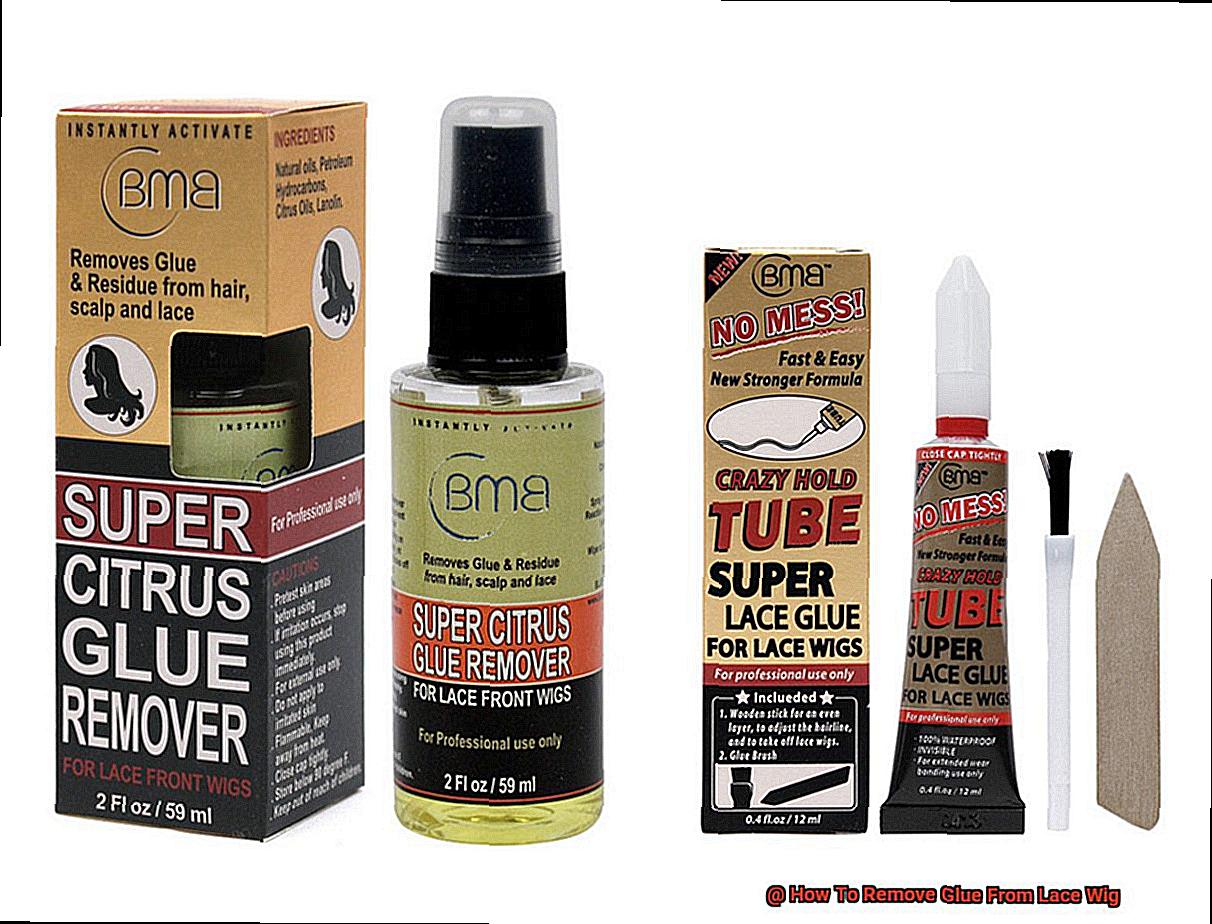
But with these steps, you can successfully remove glue residue from your wig’s delicate lace material without causing damage.
Wash and Dry the Wig Thoroughly
To get started, you’ll need some mild shampoo, conditioner, and cold water. Fill a basin or sink with cold water and add a small amount of shampoo.
Gently swirl the wig in the water for a few minutes, ensuring that every strand is coated with shampoo. Avoid rubbing or scrubbing the hair as this can result in tangling or damage to the delicate lace.
Once you’ve finished shampooing, rinse your wig thoroughly with cold water until all the suds are gone. It’s time for some conditioning.
Apply a small amount of conditioner to the hair and distribute it evenly using a wide-tooth comb. Allow the conditioner to sit for a few minutes before rinsing it off with cold water.
After washing, gently pat the excess water out of the hair using a clean towel. Avoid wringing or twisting the hair as this can lead to tangling or damage.
For best results, place your wig on a wig stand to air dry. Be sure to keep it away from direct sunlight or heat sources, which can harm the hair fibers.
So, washing and drying your lace wig after removing glue is crucial for maintaining its quality and prolonging its lifespan.
With just a little bit of care and attention, your wig can look as good as new for many uses to come.
Tips for Removing Glue from a Lace Wig
Lace wigs are popular due to their natural-looking appearance and versatility, but removing glue from them can be a daunting task. However, with the right tips and techniques, this process can be made easier and less stressful. Here are seven effective tips for removing glue from a lace wig:
Use a Wig Adhesive Remover
Wig adhesive removers are specifically formulated to dissolve glue without damaging the wig or scalp. Simply spray the remover onto the glued area and let it sit for a few minutes before gently brushing out the glue.
Apply Oil or Conditioner
Oils such as coconut oil, olive oil, or baby oil can help loosen the glue from the lace wig. Apply the oil directly onto the glued area and let it sit for a few minutes before gently brushing out the glue.
Try Alcohol
Alcohol is another potent solution for removing glue from a lace wig. Dip a cotton ball into rubbing alcohol and dab it onto the glued area. Let it sit for a few minutes before gently brushing out the glue.
Use Acetone Nail Polish Remover
Acetone nail polish remover can also be used to remove glue from a lace wig. Apply a small amount of acetone onto the glued area and let it sit for a few minutes before gently brushing out the glue.
Use Warm Water Soak
Soaking the lace wig in warm water can help loosen the glue. Fill a bowl with warm water and submerge the glued area of the wig for a few minutes before gently brushing out the glue.
Apply Heat
Heat can also help loosen the glue from the lace wig. Use a blow dryer on low heat to warm up the glued area before gently brushing out the glue.
Seek Professional Help
If you’re still having trouble removing glue from your lace wig, seek professional help from a hair stylist or wig specialist who has experience removing glue from lace wigs. They may have specialized products and techniques that can make the process easier and more effective.
So, removing glue from a lace wig can be a tedious task, but with these tips, you can effectively get rid of any residue without damaging your wig or scalp. Remember to be patient and gentle during the process and take good care of your lace wig after removing the glue to ensure its longevity.
hCjoBMmCyx4″ >
Conclusion
In conclusion, don’t let glue residue get you down when it comes to your lace wig.
With the right techniques and equipment, you can safely and efficiently remove it without causing any damage. And before starting the process, make sure you have a clean towel or cloth on hand.
Preparing your wig for removal is also vital. A good first step is saturating the wig with rubbing alcohol and gently pressing it into the lace.
This will break down the glue and make it easier to remove. Another important step is applying a solvent to glued areas.
Alcohol, acetone, and citrus-based solvents are all suitable options for dissolving adhesives. When peeling off the glue residue, patience and care are key to avoiding damage to the delicate lace fabric.
And once you’ve successfully removed all traces of glue, don’t forget to wash and dry your lace wig to retain its appearance and prolong its life. But if you’re still struggling with stubborn glue remnants, don’t worry.
There are some simple tips that can help. Try using a wig adhesive remover or applying oil or conditioner.
You could also experiment with alcohol or acetone nail polish remover, use warm water soak or apply heat – whatever works best for you. And if all else fails, remember that seeking professional assistance is always an option.




